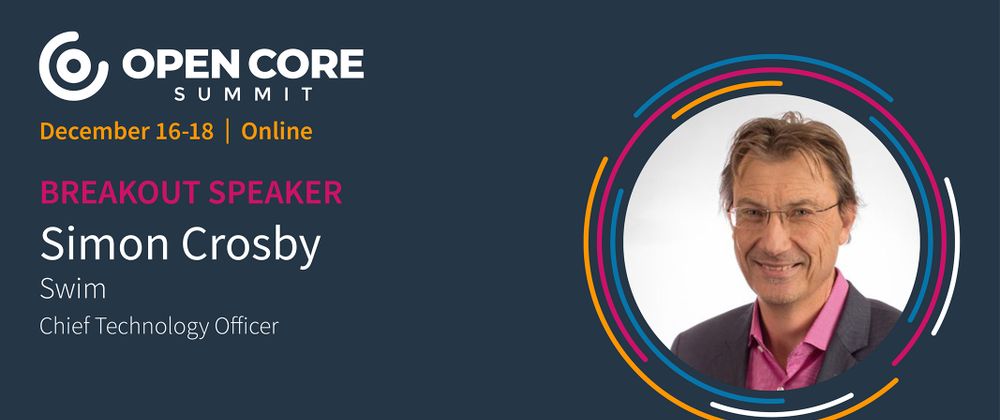Simon Crosby is CTO at Swim. Swim offers the first open core, enterprise-grade platform for continuous intelligence at scale, providing businesses with complete situational awareness and operational decision support at every moment. Simon co-founded Bromium (now HP SureClick) in 2010 and currently serves as a strategic advisor. Previously, he was the CTO of the Data Center and Cloud Division at Citrix Systems; founder, CTO, and vice president of strategy and corporate development at XenSource; and a principal engineer at Intel, as well as a faculty member at Cambridge University, where he led the research on network performance and control and multimedia operating systems.
Relevant Links
LinkedIn - Twitter - Wikipedia
SwimOS: stateful, in-memory computation by concurrent actors that link in real-time to build models from streaming data that analyze, learn, predict on-the-fly
Simon introduces the presentation — 0:00
Walk through example of continuous intelligence of a downtown area. Every day, Palo Alto (with a few hundred intersections) traffic infrastructure creates more data than all of Twitter. — 0:35
Continuous intelligence on city size of Las Vegas, with 1000s of intersections, is about 60 TB/day. “The traditional way of dealing with large amounts of information is a huge problem for us today, exacerbated by the cloud architecture that we’re so dependent on.” — 1:10
Walking through a customer use case with a large mobile provider with 4 PB/day (FaceBook’s worth of information) and continuously optimizing their network. Goal is to provide intelligence, continuously, for 100s of millions of subscribers and base system, to make sure connection quality is continuously optimized. Getting down from 10-hour time basis down to millisecond level — 1:37
“The patterns we’ve inherited aren’t serving us.” Big Data is based on store and then analyze. But data is short-lived and ephemeral, and flows are boundless. Attempting to use Big Data for wrong problems can be expensive, slow, and mismatched to our business purpose — 2:42
How can we do better? Store then analyze is out-of-date. We have to move to Analyze & React immediately (and maybe store later). Swim calls this Continuous Intelligence. Continuous Intelligence applications always have the answer (don’t need a query or a triggered update, as data triggers computation when it arrives.) They analyze, learn, and predict on-the fly. Arrival of data triggers computation. Data drives computation. — 3:50
Simon walks through examples, including (1) prediction of nozzle failures, (2) traffic analysis, (3) analysis of live trucks — 5:10
Benefits. (1) Get answers a million times faster, (2) use 90% less infrastructure, (3) applications are easy to develop and operate, (4) do data science on live data. — 7:00
Simon explains how clouds give up performance as they scale out. How can we get around that? (1) Adopt a stateful computing architecture, where data stays in memory associated with last event, and compute on the fly. Stateful computing scales up and out. (2) We don’t store, we just compute. Compute on-the-fly to always have the answer. (3) Get to find powerful insights into data by looking across streams. Real-world context offers meaning. (4) Get to use languages and operations tools everyone knows. — 8:48
Swim: LinkedIn for Things. Simon walks through what Swim is, web agents, and linked web agents. — 10:18
Continuously analyze, learn, and predict — 12:07
Diagram of a Swim application — 12:47
Easy for Real Humans. Simon explains how developers use Swim, starting with Java applications and Kubernetes deployment. A simple and fast process. — 13:45
Where do these things run? Swim runs wherever there is compute. “Where is not a good question, they just move around (to wherever there is compute).” — 14:52
Summary of learnings and benefits from Continuous Intelligence — 15:58
Share your questions and comments below!



Top comments (0)